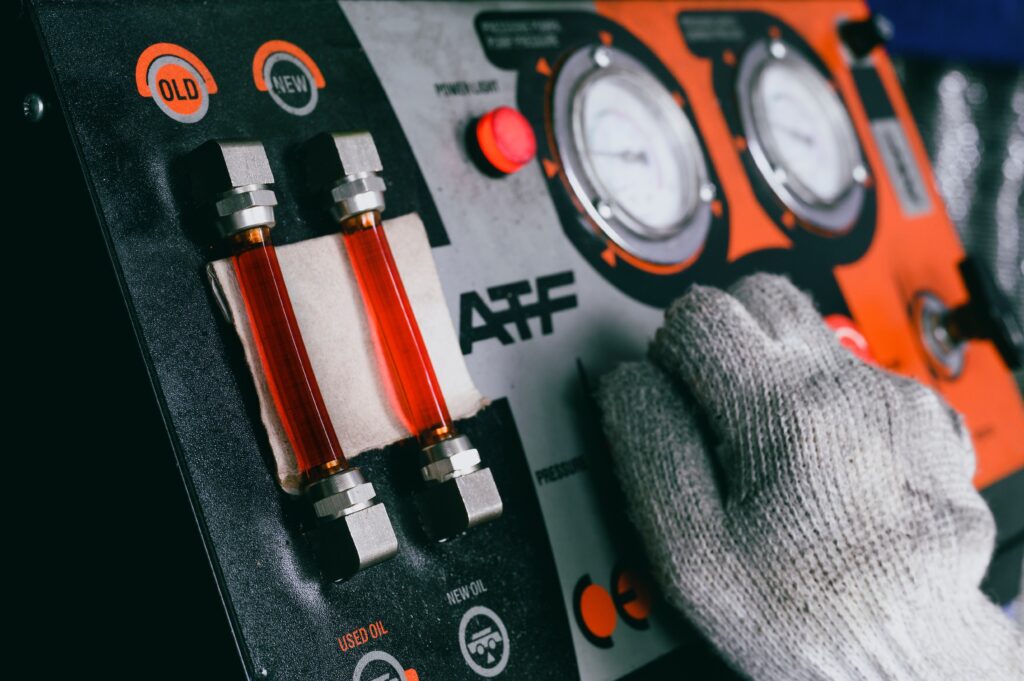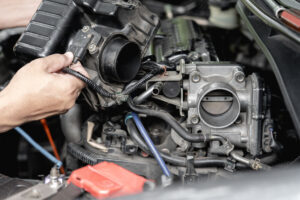Transmission Fluid: The Most Overlooked Maintenance That Can Save Your Ride

When it comes to vehicle maintenance, most people remember to change their engine oil, rotate their tires, and replace their brake pads. But there’s one critical fluid that often gets neglected until it’s too late—transmission fluid. It’s the lifeblood of your transmission, keeping everything running smoothly, reducing heat, and preventing costly repairs. Yet, it’s probably the most overlooked fluid in a vehicle’s maintenance schedule. Let’s break down why transmission fluid matters, how it works, and what happens when you ignore it.
Table of Contents
What Does Transmission Fluid Do?
Your transmission is one of the most complex and expensive components in your vehicle. Whether you’re running an automatic, manual, or a CVT, the fluid inside plays a huge role in keeping it in peak condition. Here’s what transmission fluid does:
- Lubrication: Inside the transmission, there are gears, bearings, and moving parts that need constant lubrication to prevent wear and tear.
- Heat Dissipation: Transmissions generate a lot of heat, especially under heavy loads or towing. The fluid absorbs and dissipates this heat, preventing overheating.
- Hydraulic Function (for Automatics and CVTs): In an automatic transmission, the fluid helps transfer power from the engine to the wheels through a hydraulic system. Without proper fluid levels or quality, shifting can become rough or even fail completely.
- Cleaning and Protection: Over time, tiny metal particles and debris from internal components can accumulate. Transmission fluid contains detergents and additives that help clean and prevent sludge buildup.
Without clean, high-quality transmission fluid, your transmission will start slipping, overheating, or even fail altogether. And if you’ve ever had to replace a transmission, you know it’s no small expense.
Why People Neglect Transmission Fluid Changes
Unlike engine oil, which has a clear and frequent maintenance schedule, transmission fluid changes often get overlooked for several reasons:
- It Lasts Longer (But Not Forever): Many modern transmissions come with “lifetime” fluid, leading people to believe it never needs to be changed. In reality, even “lifetime” fluid degrades over time and needs replacement.
- Lack of Warning Signs: When engine oil gets low or dirty, you might see warning lights or hear strange noises. Transmission fluid, on the other hand, degrades gradually, and by the time symptoms show, damage may already be done.
- Complexity of Checking It: Unlike engine oil, which has an easy-to-access dipstick in most vehicles, transmission fluid often requires a more involved process to check—sometimes needing a warm engine, a specific gear selection, or even a special tool.
- Cost Concerns: Transmission fluid changes cost more than an oil change, and some people avoid it to save money—only to face much steeper repair bills later.
How Often Should You Change Transmission Fluid?
The best way to determine when to change your transmission fluid is by checking your owner’s manual. That said, here are some general guidelines:
- Automatic Transmissions: Every 30,000 to 60,000 miles, depending on driving conditions. If you tow, drive in stop-and-go traffic, or operate in extreme temperatures, you might need changes on the lower end of that range.
- Manual Transmissions: Typically 30,000 to 50,000 miles, though some high-performance vehicles may need changes more frequently.
- CVTs (Continuously Variable Transmissions): These require specialized fluid and should typically be changed every 50,000 miles or as recommended by the manufacturer.
If you’re unsure, checking the condition of your fluid can help. Clean, healthy transmission fluid should be bright red or pink and have a sweet or neutral smell. If it’s dark brown, smells burnt, or has visible debris, it’s time for a change.
The High Cost of Ignoring Transmission Fluid
Ignoring your transmission fluid might not seem like a big deal—until problems arise. Low or degraded fluid can lead to:
- Slipping gears
- Harsh or delayed shifting
- Overheating, leading to internal damage
- Total transmission failure, costing thousands of dollars to repair or replace
A simple $100-$300 transmission service could save you from a $3,000-$7,000 transmission replacement. That’s a no-brainer.
Final Thoughts: Don’t Skip This Maintenance
For a lot of car owners, transmission fluid is out of sight, out of mind—until they find themselves on the side of the road with a blown transmission. Regularly checking and changing your transmission fluid is one of the easiest ways to keep your vehicle running smoothly and avoid major repair bills down the road.
So, next time you’re planning your maintenance, don’t forget about your transmission fluid. It’s a small investment that can make a huge difference in the longevity and performance of your ride.









